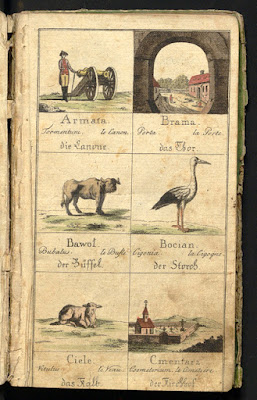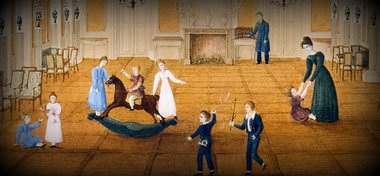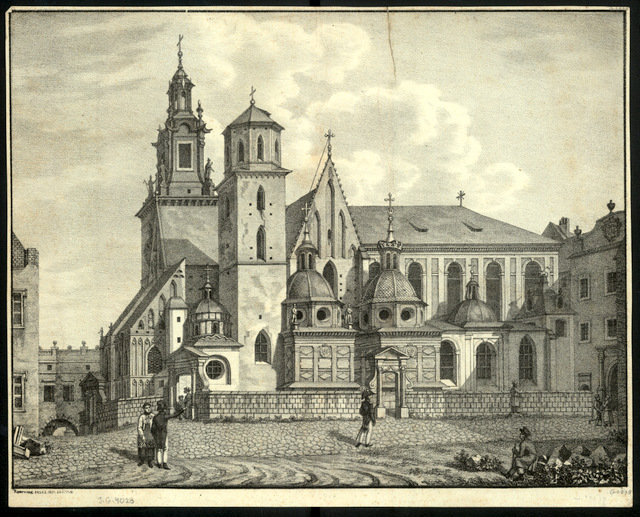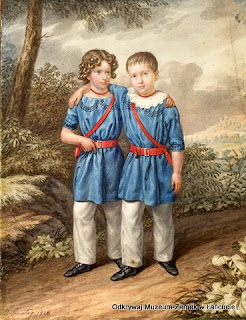TO BRING UP TO BE A "BRAVE CITIZEN OF THE COUNTRY", OR HOME EDUCATION IN THE CHAIN
Hello May, beautiful May,
Hail the great Kollataj!*.
The most important event in the history of Polish education was the establishment of the Commission of National Education by a resolution of the Sejm of October 14, 1773. The first educational authority in Poland and Europe. This put the education system in order, influenced the establishment of elementary schools and the publication of textbooks.

in Polish, French and German
Lviv 1799
source: polona.pl
However, home education was still not unusual in educating entire generations of children of aristocratic, landed and noble families.
In Lancut, too, children were raised from an early age by properly selected preceptors. This well-thought-out model of imparting knowledge, carried out in close consultation with parents, was in line with their professed principles, common to the entire sphere and expected preparation for further stages of education.
What the system had in common was a respect for tradition and the upbringing of children and young people in a patriotic spirit and an interest in European culture.
For Alfred I and his wife Józefa (Josephine) of the Czartoryski family, the Łańcut Castle became a family home. Here they raised their children Arthur (1815), Julia (1818), Sophia (1820) and Alfred (1822). It was also here that Adam Potocki (1822), nephew of the castle's owner, son of Artur Potocki and Zofia Potocka, née Branicka Potocka, and Zofia's niece, Aleksandra Potocka (1818), called Sasha, spent his first years of life.
The Ballroom of the Łańcut Castle became an excellent place for all children to play, swings and sandpits were set up for them in the gardens, and a house was built for the girls. As playmates, the children of Łańcut had the small residents of neighboring Przeworsk, the children of Henryk Lubomirski and Teresa née Czartoryska.
There was also no shortage of bacon toys, trumpets, dolls and dishes for them, horses, soldiers, paints and paint canvases - a whole children's stall.
 |
||
|
The home education of the eldest of the boys, Artur, as soon as he turned 4, was entrusted to Adam Klodziński, who had already served as a tutor in Sieniawa for Adam Czartoryski. The young Mr. and Mrs. Potocki maintained close contacts with the Sieniawa court and, while visiting there, probably had the opportunity to get to know and appreciate Klodziński's lively intelligence, literary talent and comprehensive education. Klodzinski was fluent in Latin, French and German, and did not stop to deepen his knowledge. Many years later, in 1839, Henryk Lubomirski appointed him, having already left Łańcut, as director of the Ossolineum.
 |
||
|
The boy's tutor and tutor wanted to raise him as a "brave citizen of the country." In addition to lessons, the program during his stays in Krakow included visits to the monuments of the past, the Wawel Castle tombs, churches and monasteries, and the Jagiellonian Library to evoke "great images of the past" before the student's eyes.
The teacher instilled in the boy a lively patriotic attitude. In time Klodzinski also became the tutor of the younger boys Alfred and Adam.
 |
| Alfred and Adam Potocki Joseph Sonntag, 1828 Collection of the Museum-Castle in Łańcut |
Teaching usually lasted from 9 a.m. to 1 p.m., and the boys also took calligraphy and geometry lessons, among other things.
The girls, which was part of the canon of young women's education, took music and piano lessons, with Joseph Leschetizky, Theodore's father, as their teacher. Julia was a poised student, Zosia was less talented.
Mr. and Mrs. Potocki, Alfred and Józefa also collected with children in mind, a book collection appropriate to their age and needs, which has been preserved to this day. In it one can find primers, school textbooks, dictionaries, poems and fiction.
Children's education in Łańcut was patriotic in spirit, cared for not only by Kłodziński, but also by the castle librarian, participant in the November Uprising Jan Nepomucen Deszkiewicz-Kundzicz, author of creative works devoted to the Polish language, and the estate manager Kazimierz Stęchliński, in charge of the castle armory. And he told the children about the history of Poland and the Potocki family. EK³
*Hail May daybreak! (Mazurka of May 3) by Rajnold Suchodolski
